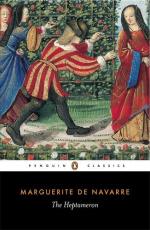Louise, who, although barely nubile, impatiently longed to become a mother, gave birth to her first child after four years of wedded life. “My daughter Margaret,” she writes in the journal recording the principal events of her career, “was born in the year 1492, the eleventh day of April, at two o’clock in the morning; that is to say, the tenth day, fourteen hours and ten minutes, counting after the manner of the astronomers.” This auspicious event took place at the Chateau of Angouleme, then a formidable and stately pile, of which nowadays there only remains a couple of towers, built in the fourteenth and fifteenth centuries. Soon afterwards Cognac became the Count of Angouleme’s favourite place of residence, and it was there that Louise gave birth, on September 12th, 1494, to her second child, a son, who was christened Francis.
Louise’s desires were now satisfied, but her happiness did not long remain complete. On January 1st, 1496, when she was but eighteen years old, she lost her amiable and accomplished husband, and forthwith retiring to her Chateau of Romorantin, she resolved to devote herself entirely to the education of her children. The Duke of Orleans, who, on the death of Charles VIII. in 1498, succeeded to the throne as Louis XII., was appointed their guardian, and in 1499 he invited them and their mother to the royal Chateau of Amboise, where they remained for several years.
The education of Francis, who had become heir-presumptive to the throne, was conducted at Amboise by the Marshal de Gie, one of the King’s favourites, whilst Margaret was intrusted to the care of a venerable lady, whom her panegyrist does not mention by name, but in whom he states all virtues were assembled. (1) This lady took care to regulate not only the acts but also the language of the young princess, who was provided with a tutor in the person of Robert Hurault, Baron of Auzay, great archdeacon and abbot of St. Martin of Autun. (2) This divine instructed her in Latin and French literature, and also taught her Spanish and Italian, in which languages Brantome asserts that she became proficient. “But albeit she knew how to speak good Spanish and good Italian,” he says, “she always made use of her mother tongue for matters of moment; though when it was necessary to join in jesting and gallant conversation she showed that she was acquainted with more than her daily bread.” (3)
1 Sainte-Marthe’s Oraison funebre de la Royne de Navarre, p. 22. Margaret’s modern biographers state that this lady was Madame de Chastillon, but it is doubtful which Madame de Chastillon it was. The Rev. James Anderson assumes it was Louise de Montmorency, the mother of the Colignys, whilst Miss Freer asserts it was Anne de Chabannes de Damniartin, wife of James de Chastillon, killed in Italy in 1572. M. Franck has shown, in his edition of the Heptameron, that Anne de Chabannes died about 1505, and that James de Chastillon then married Blanche de Tournon. Possibly his first wife may have been Margaret’s governess, but what is quite certain is that the second wife became her lady of honour, and that it is she who is alluded to in the Heptameron.
2 Odolant Desnos’s
Memoires historiques sur Alencon,
vol. ii.




